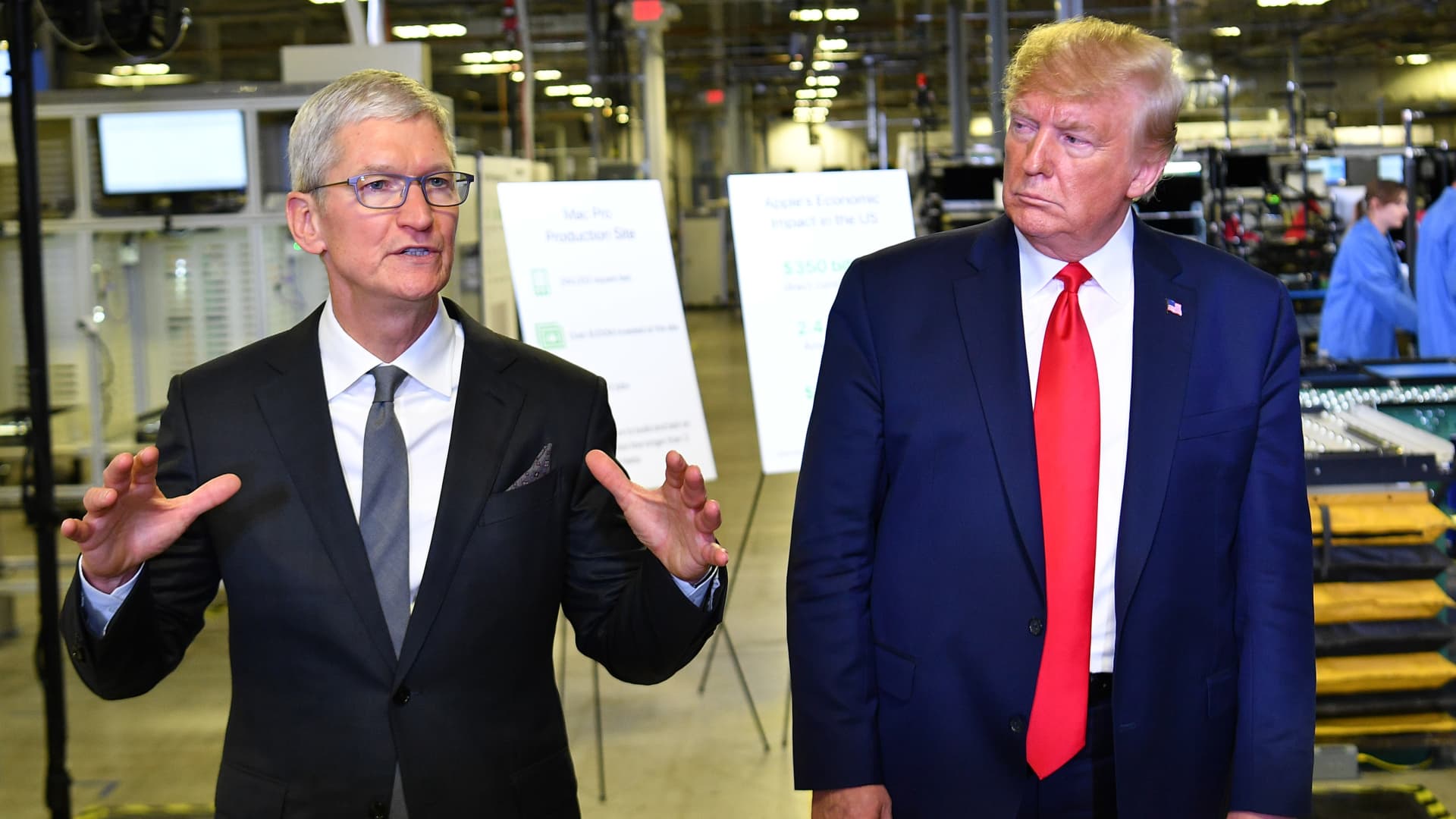Apple iPhone Tariffs: Trump's Controversial Trade Policy and its Impact
Introduction: The imposition of tariffs on imported goods, a hallmark of the Trump administration's trade policy, sent shockwaves through various industries. One sector significantly impacted was the tech world, particularly Apple and its flagship product, the iPhone. This article delves into the details of these tariffs, their impact on Apple, consumers, and the broader global economy, and the lasting consequences of this controversial policy.
The Tariffs: A Deep Dive
In 2018 and 2019, the Trump administration implemented a series of tariffs on goods imported from China, including components used in the manufacturing of iPhones. These tariffs, initially targeting specific goods, eventually broadened, creating uncertainty and impacting the cost of production for numerous tech companies. The tariffs varied in percentage, adding significantly to the cost of importing these crucial components.
-
Impact on Production Costs: The increased tariff costs were directly absorbed by Apple's supply chain. This meant higher prices for producing iPhones, a factor that could directly impact their profitability and market competitiveness.
-
Shifting Production Strategies: Facing higher tariffs in the US market, Apple was forced to consider alternative manufacturing locations. While some components continued to be sourced from China, the company explored diversifying its supply chain, potentially leading to increased production in other countries like India and Vietnam. This complex shift involved significant investment and logistical challenges.
-
Consumer Impact: While Apple initially absorbed some of the increased costs, consumers ultimately felt the impact through potentially higher iPhone prices or reduced profit margins for the company. This raised concerns about accessibility and the affordability of Apple products, especially in already price-sensitive markets.
Beyond Apple: The Broader Economic Consequences
The iPhone tariffs were a microcosm of a larger trade war between the US and China. The impact wasn't limited to Apple; it affected other tech companies relying on Chinese manufacturing and the entire global supply chain.
-
Supply Chain Disruptions: Tariffs disrupted established supply chains, forcing companies to renegotiate contracts, explore alternative sourcing options, and navigate new logistical hurdles. This added complexity and unpredictability to the business environment.
-
Inflationary Pressures: Increased import costs contributed to inflationary pressures within the US economy. This affected not just electronics but other consumer goods, impacting overall consumer spending and economic growth.
-
Geopolitical Tensions: The tariff war exacerbated geopolitical tensions between the US and China, adding an element of uncertainty to global trade relations and investment decisions.
The Long-Term Effects
The long-term effects of the Trump-era iPhone tariffs are still being felt today. While some argue that the tariffs spurred diversification and reshoring efforts, others highlight the negative impact on consumer prices and the added complexity to global trade. The event serves as a significant case study in the impact of protectionist trade policies on global industries and economies.
-
Reshoring and Diversification: The tariffs accelerated the trend of companies diversifying their manufacturing bases, aiming for reduced reliance on a single country. However, this process is complex and costly, requiring significant investment and adaptation.
-
Increased Prices and Reduced Competitiveness: The overall effect on consumer prices remains a point of contention. While some prices increased, others stabilized, indicating a complex interplay of factors beyond just tariffs.
-
Lessons Learned: The experience highlighted the interconnected nature of global supply chains and the significant challenges associated with protectionist trade policies.
Conclusion:
The iPhone tariffs imposed during the Trump administration remain a significant event in recent economic history. They highlighted the complexities of global trade, the interconnectedness of supply chains, and the profound impact of trade policy on both individual companies and the broader global economy. While the immediate fallout is relatively clear, the long-term consequences are still unfolding and continue to be a subject of debate and analysis. Understanding these consequences is vital for navigating the evolving landscape of international trade and technology.

